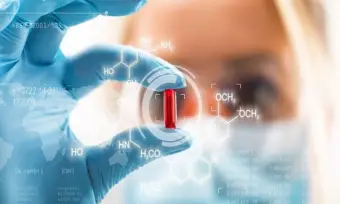Lithium carbonate API Manufacturers & Suppliers
Find, compare & contact
Filters
Custom request?
Type
Production region
Qualifications
Country of origin
Distributor
Produced in:
Established in: 2011
MOQ: -
Employees: 50+

Comprehensive Product Portfolio with Competitive Pricing.

Focus on Quality and Regulatory Compliance, One-stop, Responsive, End-to-End Service from R&D Through Commercialization.

Expertise and Reliability in Pharmaceutical Material Supply, Backed by a Singaporean Presence.
+ 0
All certificates
Producer
Produced in:
Established in: 2020
MOQ: -
Employees: 100+

The facility is accredited by GMP, ISO, Halal and Kosher

Business presence to more than 25 countries worldwide

Strong foothold in Latin America, Africa, Europe and Asia
+ 0
All certificates
Distributor
Produced in:
Established in: 2002
MOQ: -
Employees: 10

Comprehensive, hassle-free solutions that manage everything from suppliers to logistics

Family-owned looking for Trusted & Long-Term Partnerships

Quality & dependability ensuring highest-quality materials from trusted manufacturers.
+ 0
All certificates
Distributor
Produced in:
Established in: 2011
MOQ: -
Employees: 25

Technical expertise ensuring optimal selection and development of APIs and intermediates

Globally connected with multiple GMP-compliant manufacturing facilities

Regulatory excellence with a dedicated team with global reach
+ 0
All certificates
How does it work?
You can register for free as long as you are registering on behalf of a legal company related to the pharmaceutical industry
Search in the search bar the product that you’re looking for. We’ll show you an overview of all available suppliers. Use the filters to select the relevant suppliers only
Have you found interesting suppliers? Then it’s time to contact them. Use the send inquiry button and send them a message. You can send for each product, 3 inquiries per week
Suppliers get notified by Pharmaoffer that they’ve received a new inquiry. They will come back to you with their questions, certificates, and offer in the chat on Pharmaoffer. We will send you an email in case of any news
Does the supplier meet your quality and commercial requirements? Then you can place the order. Just follow the steps of our order module
Looking for Lithium carbonate API 554-13-2?
- Description:
- Here you will find a list of producers, manufacturers and distributors of Lithium carbonate. You can filter on certificates such as GMP, FDA, CEP, Written Confirmation and more. Send inquiries for free and get in direct contact with the supplier of your choice.
- API | Excipient name:
- Lithium carbonate
- Synonyms:
- Carbonic acid, dilithium salt , Dilithium carbonate , Lithii carbonas , Lithonate
- Cas Number:
- 554-13-2
- DrugBank number:
- DB14509
- Unique Ingredient Identifier:
- 2BMD2GNA4V
General Description:
Lithium carbonate, identified by CAS number 554-13-2, is a notable compound with significant therapeutic applications. Lithium has been used to treat manic episodes since the 19th century. Though it is widely used, its mechanism of action is still unknown. Lithium carbonate has a narrow therapeutic range and so careful monitoring is required to avoid adverse effects.
Indications:
This drug is primarily indicated for: Lithium carbonate is indicated as a monotherapy for the treatment of acute manic and mixed episodes associated with bipolar 1 disorder in patients ≥7 years of age. It is also indicated as a maintenance treatment for bipolar 1 disorder in patients ≥7 years of age. Its use in specific medical scenarios underscores its importance in the therapeutic landscape.
Metabolism:
Lithium carbonate undergoes metabolic processing primarily in: Lithium carbonate is not metabolized before excretion. This metabolic pathway ensures efficient processing of the drug, helping to minimize potential toxicity and side effects.
Absorption:
The absorption characteristics of Lithium carbonate are crucial for its therapeutic efficacy: Lithium absorption is rapid and oral bioavailability is close to 100%. The drug's ability to rapidly penetrate into cells ensures quick onset of action.
Half-life:
The half-life of Lithium carbonate is an important consideration for its dosing schedule: The half life of lithium carbonate is 18 to 36 hours. Other sources say it may be 7 to 20 hours. This determines the duration of action and helps in formulating effective dosing regimens.
Protein Binding:
Lithium carbonate exhibits a strong affinity for binding with plasma proteins: Lithium carbonate is not significantly protein bound. This property plays a key role in the drug's pharmacokinetics and distribution within the body.
Route of Elimination:
The elimination of Lithium carbonate from the body primarily occurs through: Lithium is primarily eliminated through the kidneys and elimination in the feces is insignificant. Understanding this pathway is essential for assessing potential drug accumulation and toxicity risks.
Volume of Distribution:
Lithium carbonate is distributed throughout the body with a volume of distribution of: Apparent volume of distribution is 0.7 to 1.0L/kg. This metric indicates how extensively the drug permeates into body tissues.
Clearance:
The clearance rate of Lithium carbonate is a critical factor in determining its safe and effective dosage: Clearance is generally between 10 and 40mL/min but may be as low as 15mL/min in elderly patients and those with renal impairment. It reflects the efficiency with which the drug is removed from the systemic circulation.
Pharmacodynamics:
Lithium carbonate exerts its therapeutic effects through: Lithium's mechanism of action is still unknown. Lithium's therapeutic action may be due to a number of effects, ranging from inhibition of enzymes such as glycogen synthase kinase 3, inositol phosphatases, or modulation of glutamate receptors. The drug's ability to modulate various physiological processes underscores its efficacy in treating specific conditions.
Mechanism of Action:
Lithium carbonate functions by: Lithium's mechanism of action is still unknown. However, the “inositol depletion theory” suggests 3 main potential targets. These targets are inositol monophosphatase, inositol polyphosphatase, and glycogen synthase kinase 3(GSK-3). The “Inositol depletion theory” suggests lithium behaves as an uncompetitive inhibitor of inositol monophosphatase in a manner inversely proportional to the degree of stimulus. This inhibition lowers levels of inositol triphosphate. However, stronger inhibitors of inositol monophosphatase are not as clinically effective and low levels of inositol triphosphate are associated with memory impairment. Lithium acts on inositol polyphosphatase as an uncompetitive inhibitor. This inhibition is thought to have multiple downstream effects that have yet to be clarified. Lithium regulates phosphorylation of GSK-3 which regulates other enzymes through phosphorylation. Lithium can also inhibit GSK-3 through interfering with the magnesium ion in the active site. This mechanism highlights the drug's role in inhibiting or promoting specific biological pathways, contributing to its therapeutic effects.
Toxicity:
Classification:
Lithium carbonate belongs to the class of organic compounds known as organic carbonic acids. These are compounds comprising the carbonic acid functional group, classified under the direct parent group Organic carbonic acids. This compound is a part of the Organic compounds, falling under the Organic acids and derivatives superclass, and categorized within the Organic carbonic acids and derivatives class, specifically within the Organic carbonic acids subclass.
Categories:
Lithium carbonate is categorized under the following therapeutic classes: Acids, Acids, Noncarboxylic, Alkalies, Anions, Antidepressive Agents, Antimanic Agents, Carbon Compounds, Inorganic, Carbonates, Carbonic Acid, Central Nervous System Agents, Central Nervous System Depressants, Drugs that are Mainly Renally Excreted, Drugs that are Mainly Renally Excreted with a Narrow Therapeutic Index, Electrolytes, Enzyme Inhibitors, Ions, Lithium Compounds, Mood Stabilizer, Narrow Therapeutic Index Drugs, Nephrotoxic agents, Nervous System, Neurotoxic agents, Psycholeptics, Psychotropic Drugs, QTc Prolonging Agents, Serotonergic Drugs Shown to Increase Risk of Serotonin Syndrome, Serotonin Agents, Serotonin Modulators, Tranquilizing Agents. These classifications highlight the drug's diverse therapeutic applications and its importance in treating various conditions.
Experimental Properties:
Further physical and chemical characteristics of Lithium carbonate include:
- Water Solubility: 100mM
- Melting Point: 180.5
- Boiling Point: 1336
Lithium carbonate is a type of Alkalinizing agents
Alkalinizing agents, a pharmaceutical API category, refers to a group of substances used to increase the pH (alkalinity) of a solution or body fluid. These agents play a crucial role in various medical applications, such as the treatment of acidosis, kidney disorders, and certain drug overdoses.
One commonly used alkalinizing agent is sodium bicarbonate, which is highly effective in raising the pH of blood and urine. It works by neutralizing excess acid and restoring the acid-base balance in the body. Sodium bicarbonate is often administered intravenously in emergency situations to rapidly correct severe acidosis.
Another alkalinizing agent, acetazolamide, is frequently employed in the treatment of glaucoma and certain types of epilepsy. By inhibiting carbonic anhydrase, acetazolamide reduces the production of bicarbonate ions, leading to a systemic decrease in pH. This mechanism is particularly useful in lowering the intraocular pressure associated with glaucoma.
Alkalinizing agents are also utilized in the management of certain drug toxicities. For instance, methotrexate, a chemotherapy medication, can cause severe toxicity if its elimination is hindered. Alkalinizing the urine with agents like sodium bicarbonate enhances methotrexate solubility, preventing the formation of toxic crystals in the kidneys.
In conclusion, alkalinizing agents are indispensable pharmaceutical APIs that help correct acid-base imbalances, treat specific medical conditions, and mitigate drug toxicities. Their diverse applications make them valuable tools in modern medicine.
Lithium carbonate manufacturers | traders | suppliers
We have 4 companies offering Lithium carbonate produced in 0 different countries.
Get in contact with the supplier of your choice:
- Apollo Healthcare Resources (Singapore) from Singapore, product country of origin Singapore
- Atilus Pharma from India, product country of origin India
- Tenatra Exports Private Limited from India, product country of origin India
- Global Pharma Tek from India, product country of origin India
Let the supplier know whether you are looking for a product with a specific monograph such as EP (Ph. Eur.), USP, JP, BP or another quality. Or, whether you are looking for hydrochloride (HCl), anhydricum, base, micronisatum or a specific purity.
You can use the filters to find high-quality suppliers. For example, you can select GMP, FDA or ISO certified suppliers. Visit our FAQ page or use the chat box in the corner to get more information about Pharmaoffer.













